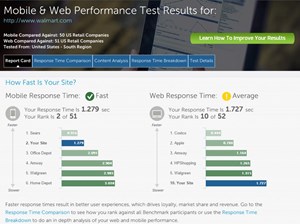
Ruxit announced the general availability of Deep Docker Monitoring.
This new solution from Ruxit addresses the key technological challenges of moving containerized, micro service applications into production, and meets a growing need as Docker adoption becomes more prevalent. Ruxit's Docker capabilities are far more extensive than partial solutions recently announced by competitors.
Ruxit's full visibility into Docker production environments integrates views across the infrastructure and applications, auto-identifying dependencies and enabling organizations to identify and resolve issues faster and more effectively.
With container technologies being used increasingly in production, Ruxit Deep Docker Monitoring meets the rising demand for easy-to-use, yet powerful monitoring and management solutions for Docker environments. "A new study we will be releasing next month reveals that about 40 percent of Docker users are already or about to move into production. As they take this step, close to 50 percent see proper monitoring as a key challenge they have to master," said Bernd Greifeneder, founder of Ruxit.
"Keeping track of our real-time scalable Docker environment running on AWS Elastic Beanstalk was a real challenge before we deployed Ruxit's Deep Docker Monitoring solution. Ruxit enables us to run our systems at ideal performance levels and helps us to resolve problems quickly," said Christian Beikov, Co-Founder of Sweazer.
Greifeneder added, "We have built a full-stack solution, not a partial, limited one. Ruxit not only allows organizations to monitor Docker stats data, but also automatically detects all running processes and hosted micro services. All this information gets visualized with Ruxit's smartscape technology."
The product update is part of Ruxit's Liquid Datacenter initiative that builds on existing experience with VMWare and AWS environments to address today's highly complex and dynamic IT environments. The Docker-specific extension adds key features to the Ruxit platform, including:
- Real-time visualization of multi-datacenter environments.
- Management for the dynamics of Kubernetes, Apache Mesos and AWS Elastic Beanstalk.
- Deep network monitoring for Software Defined Networks.
- Capacity planning for Docker-based micro service architecture.
"Docker in production is a dynamic and fast evolving field, and we will be releasing even more innovation in the next months ahead," says Greifeneder.
The Latest
According to Auvik's 2025 IT Trends Report, 60% of IT professionals feel at least moderately burned out on the job, with 43% stating that their workload is contributing to work stress. At the same time, many IT professionals are naming AI and machine learning as key areas they'd most like to upskill ...
Businesses that face downtime or outages risk financial and reputational damage, as well as reducing partner, shareholder, and customer trust. One of the major challenges that enterprises face is implementing a robust business continuity plan. What's the solution? The answer may lie in disaster recovery tactics such as truly immutable storage and regular disaster recovery testing ...
IT spending is expected to jump nearly 10% in 2025, and organizations are now facing pressure to manage costs without slowing down critical functions like observability. To meet the challenge, leaders are turning to smarter, more cost effective business strategies. Enter stage right: OpenTelemetry, the missing piece of the puzzle that is no longer just an option but rather a strategic advantage ...
Amidst the threat of cyberhacks and data breaches, companies install several security measures to keep their business safely afloat. These measures aim to protect businesses, employees, and crucial data. Yet, employees perceive them as burdensome. Frustrated with complex logins, slow access, and constant security checks, workers decide to completely bypass all security set-ups ...

In MEAN TIME TO INSIGHT Episode 13, Shamus McGillicuddy, VP of Research, Network Infrastructure and Operations, at EMA discusses hybrid multi-cloud networking strategy ...
In high-traffic environments, the sheer volume and unpredictable nature of network incidents can quickly overwhelm even the most skilled teams, hindering their ability to react swiftly and effectively, potentially impacting service availability and overall business performance. This is where closed-loop remediation comes into the picture: an IT management concept designed to address the escalating complexity of modern networks ...
In 2025, enterprise workflows are undergoing a seismic shift. Propelled by breakthroughs in generative AI (GenAI), large language models (LLMs), and natural language processing (NLP), a new paradigm is emerging — agentic AI. This technology is not just automating tasks; it's reimagining how organizations make decisions, engage customers, and operate at scale ...
In the early days of the cloud revolution, business leaders perceived cloud services as a means of sidelining IT organizations. IT was too slow, too expensive, or incapable of supporting new technologies. With a team of developers, line of business managers could deploy new applications and services in the cloud. IT has been fighting to retake control ever since. Today, IT is back in the driver's seat, according to new research by Enterprise Management Associates (EMA) ...
In today's fast-paced and increasingly complex network environments, Network Operations Centers (NOCs) are the backbone of ensuring continuous uptime, smooth service delivery, and rapid issue resolution. However, the challenges faced by NOC teams are only growing. In a recent study, 78% state network complexity has grown significantly over the last few years while 84% regularly learn about network issues from users. It is imperative we adopt a new approach to managing today's network experiences ...

From growing reliance on FinOps teams to the increasing attention on artificial intelligence (AI), and software licensing, the Flexera 2025 State of the Cloud Report digs into how organizations are improving cloud spend efficiency, while tackling the complexities of emerging technologies ...

